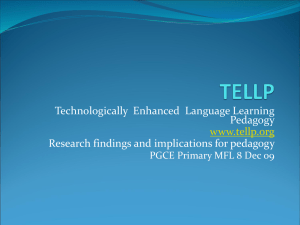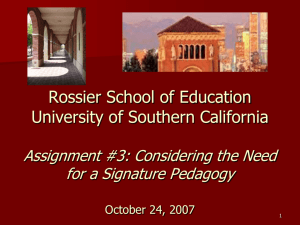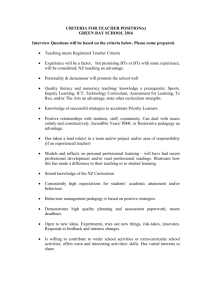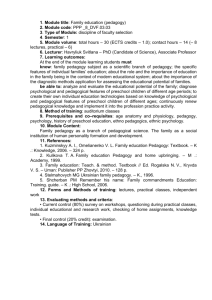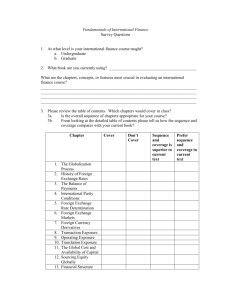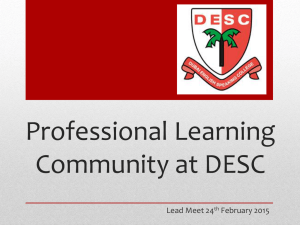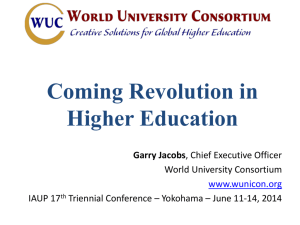With white background for printing
advertisement
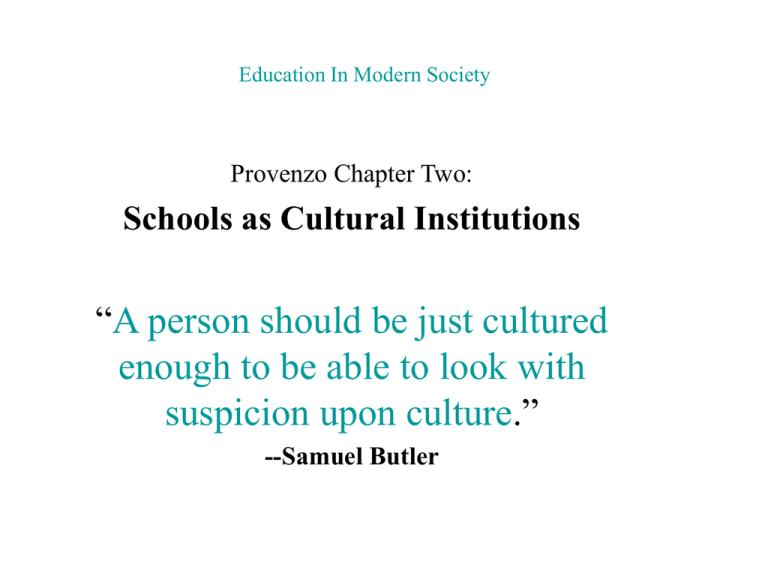
Education In Modern Society Provenzo Chapter Two: Schools as Cultural Institutions “A person should be just cultured enough to be able to look with suspicion upon culture.” --Samuel Butler Schools: cultural institutions • Culture: (T.S. Eliot): All the characteristic activities and interests of a people. Cultural eras: Modern: • European male social and cultural tradition Postmodern: • Direct challenge to narrow Western definition of legitimate knowledge High culture: • DaVinci, Michelangelo, Picasso, Shakespeare, Beethoven, Bach Popular culture: • Rock music, hamburgers, television, world wide web, and . . . Schools attempt to introduce students to: • most noble, meaningful of human creation • usually high culture Schools (subtly, overtly) socialize students . . . • to respect culture • to become functioning members of society Evidence: high school mission statements: “preparation for responsible living . . .” Emile Durkheim observed: • Education: “Systematic socialization of young generation.” Culture question: • Whose culture is being passed on by schools? 1800, 1900, 2000, 2100 a.d. Historically, the U.S. has been: • Racist, sexist, discriminatory culture. Cultural capital: • Curriculum reflects the realities of power and influence within our culture. • Curriculum selection is a cultural and political act—whether or not one is conscious of it. Cultural capital • The language teachers use, • the curricula they employ, • the values they hold can be described as cultural capital. Cultural capital (Education distributes and legitimates certain forms of: • knowledge • language • practices • values • ways of talking • acting, • moving, • dressing, • socializing. Schools: not merely instructional sites, Sites: where culture of dominant society institutionalized. Cultural capital • Teachers: 85% Caucasian • Students: 33% self report as “of color” • In a diverse society such as the U.S. where different values, traditions, and worldviews separate the students from the teachers, conflict is inevitable. Education: • Embodies specific values and purposes. • Not neutral or apolitical. • Subject to the personal needs and interests of those in power. • Increased empowerment of under-represented groups has characterized U.S. society over the last forty years. • Resulted in increased demands that new models of culture be represented in curriculum. Cultural conservatives • Argue for a model of literacy that focuses the attention of children on a common western cultural heritage. • E.D. Hirsch: What Your First (Second, Sixth Grader) Needs to Know . Cultural Conservatives argue: • Cultural literacy constitutes the only sure avenue of opportunity for the marginalized. • Lest they remain the same as their parents. Western cannon: • valuable body of knowledge • not the only body of cultural knowledge children need to know • Many of its assumptions need to be challenged if we are to achieve a more just and equitable society. Critical multiculturalists: • Respect earlier insight. • Display their respect by continuing to question the work of their intellectual ancestors. No curriculum is neutral. Formal curriculum: The explicitly stated goals and objectives of education. Hidden curriculum: • Unintended outcomes, subtle influences, and outcomes of school. • The many things which are taught in school besides the formal subject matter. Examples: Students learning how to behave in class; rules of conduct, classroom organization, informal activities such as brown nosing, being polite, deciding who and what was cool, and so on. Null curriculum: • The curriculum that does not exist • Did not make the cut • The hole in the middle of the doughnut • Something that is there but does not exist • We teach things by excluding them from the curriculum—by not teaching them. • What schools do not teach may be as important as what they do teach. • Ignorance is not simply a neutral void; • It has an important effect on the kinds of options one is able to consider, the alternatives one can examine, and the perspectives from which one can view a situation or problem. • If one of the purposes of schooling is to foster wisdom, weaken prejudice, and develop the ability to use a wide range of modes of thought, then we ought to look carefully at what the schools do not include in the curriculum. • “On the rare occasion that someone introduced another (non-Western) tradition, I dismissed it as secondary—as not holding up to the substance of the works of the Western cannon. Much of what I understood about the world was the result of what I had not been taught.” --Provenzo Resistance theory and learning: • Students rejecting the traditional curriculum • not because they are not smart enough to succeed in the work, • but because they see this education as not representing their family or cultural values. • For many disadvantaged students, success in school means a type of forced cultural suicide. Critical pedagogy: • (from pedagogy—the work or function of a teacher) • Understanding the role of education in the culture in which it functions; • Concerned with the realities of what goes on in the classroom; • The connections between the school and the society, media, families, and the society education serves. • What is taught more often than not reflects traditions of power, authority, and domination in the culture. • Effective teaching must take into account the fact that education, pedagogy, teaching, and instruction are cultural and political acts. • No such thing as neutral education exists. Critical pedagogy: • Developing pedagogical practices informed by an ethical stance that contests racism, sexism, class exploitation, and other dehumanizing and exploitative social relations as ideologies and social practices that disrupt and devalue public life. Critical pedagogy: • related to border crossing • to promote pedagogical practices that offer the possibilities for schools to become places students and teachers can become engaged in critical thinking and ethical reflection about what it means to bring a wider variety of cultures into dialogue with each other, to theorize about cultures in the plural, within, rather than outside antagonistic relations of domination and subordination. • Who creates knowledge? • Who is empowered by it? • How are different groups subordinated, marginalized, and excluded in U.S. education and culture? • What are the possibilities for resistance? • What are the possibilities for achieving a more just and equitable society through the act of teaching (and learning)? • These are questions that must be asked by those working (and studying) in postmodern schools and classrooms. Discussion questions: Can you think of examples of cultures competing with each other in your community? (Example: Gay Pride Parade and related article in Twin Ports) Discussion questions: Give examples of hidden curriculum from your own experience as a student. Discussion questions: CPS discussion J. What are the good things about contemporary or postmodern culture? What are problematic? Discussion questions: CPS definition, then discussion K. Why is the concept of paideia a useful one in understanding education and its role in our culture? Your CPS responder • Registering online • Uses for our class • Piloting this for course use-demonstration Interstate New Teacher Assessment and Support Consortium (INTASC) • • • • • • Ten standards or principles Ten entries assigned for the entire semester Compiled in a professional portfolio Handed in one week before final Create one entry for each standard or principle You may start with any principle which interests you from your reading • Samples available for reviewing: describe, analyze, reflect • Mnemonic devices for memorizing these—test material at any time. Demo devices to aid memory. • Questions are signs of intelligence: ask away
